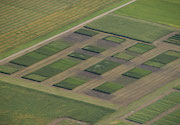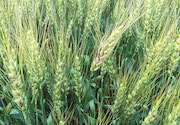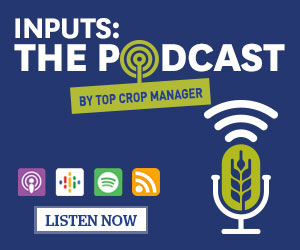View As Webpage | View Archives | Email a Friend
| |
| |
 |
 |
| |
 |
|
@{mv_date_MMM d, yyyy}@ |
|
| |
 Alberta Agriculture and Forestry has established the “Champions of Agriculture” industry advisory committee, which will discuss issues related to consumer confidence and work to debunk myths in agriculture.
» Read more...
Alberta Agriculture and Forestry has established the “Champions of Agriculture” industry advisory committee, which will discuss issues related to consumer confidence and work to debunk myths in agriculture.
» Read more...
Statistics Canada has released information for field crop acreage as of the end of March 2020. Wheat, corn for grain and oat acreage are higher than 2019, while canola, soybeans, barley and pulse crops are lower.
» Read more...
The end-of-March Statistics Canada data shows that wheat, barley and oat stocks are up, likely due to on-farm stocks, while canola, soybean, corn for grain and pulse crop stocks have dipped.
» Read more...
|
| |
 |
 |
| |
|
| |

After a long winter, you’re eager to start seeding. But to set yourself up for a successful canola harvest you should be thinking about pre-seed weed control.
To reduce competition from weeds, it’s best to start early. A pre-seed burn-off can help control invasive annual weeds, especially during a warm and wet spring when weeds tend to grow faster.
Protect your canola from the start with powerful tools, such as Prospect ™, a new pre-seed herbicide from Corteva Agriscience ™. Tank mixed with glyphosate, it provides enhanced control on weeds such as cleavers, hemp-nettle and narrow-leaved hawk’s beard.
Visit Prospect.Corteva.ca to learn more.
®, ™ Trademarks of Dow AgroSciences, DuPont or Pioneer and affiliated companies or their respective owners. © 2020 Corteva.
|
| |
|
| |
 Organic crop production requires some different management strategies, particularly regarding weeds and nutrient management. A recent study conducted at AAFC’s Swift Current Research and Development Centre in Saskatchewan examined whether diversified crop rotations and reduced tillage under organic management could keep weed populations at low levels, among other goals.
» Learn more
Organic crop production requires some different management strategies, particularly regarding weeds and nutrient management. A recent study conducted at AAFC’s Swift Current Research and Development Centre in Saskatchewan examined whether diversified crop rotations and reduced tillage under organic management could keep weed populations at low levels, among other goals.
» Learn more |
| |
 Fusarium head blight is a major concern for cereal growers, but University of Saskatchewan associate professor Vladimir Vujanovic has discovered a fungal parasite, or “mycoparasite,” that attacks both Fusarium and the toxins it creates. After two decades of research, Vujanovic found the mycoparasite in Saskatchewan wheat fields, and he is now working towards commercializing it as a biocontrol product.
» Learn more
Fusarium head blight is a major concern for cereal growers, but University of Saskatchewan associate professor Vladimir Vujanovic has discovered a fungal parasite, or “mycoparasite,” that attacks both Fusarium and the toxins it creates. After two decades of research, Vujanovic found the mycoparasite in Saskatchewan wheat fields, and he is now working towards commercializing it as a biocontrol product.
» Learn more |
| |
|
| |

In the fifth episode of our Inputs series providing exclusive coverage of the Plant Health Summit, we turn our attention to crop disease.
Syama Chatterton, plant pathologist at Agriculture and Agri-Food Canada’s Lethbridge Research and Development Centre, discusses her research with aphanomyces and root rots, including common misconceptions, the latest research, and management considerations for producers.
Dan Orchard, agronomy specialist with the Canola Council of Canada, and Curtis Henkelmann, a producer who farms in a clubroot region, discuss what they’ve learned about clubroot over the years and what other provinces can learn from Alberta.
>> Listen Now |
| |
|
| |

The Canadian and Manitoba governments invested more than $4.8 million for 22 agricultural projects under the Ag Action Manitoba Research and Innovation Activity Stream.
» Read more
Dry conditions, especially in the southern Prairies, have resulted in above-average seeding progress, but rain is needed to help the crops germinate.
» Read more
The Pest Management Regulatory Agency approved UPL’s Batalium herbicide to control weeds in Canadian spring, durum and winter wheat.
» Read more
|
| |
| |
&cm1=1)
|










